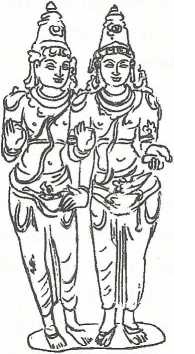Talk:Asvins
Aśvins (‘related to the horses’) They are twin-deities that are given an important place in the Rgveda. At least 50 suktas are in praise of them. They are always described and eulogized together. Being considered as the twin sons of Surya (the Sun-god) and his spouse Samjñā when they had assumed the horse-form, they have been described as ‘Aśvinau,’ or Aśvīni-kumāras (aśva = horse).
It is rather difficult to say what aspect of the powers of nature they represent. That they stand for night and day, or earth and sky, or moon and sun, is the opinion of some scholars. There is also one view that they were originally two kings who were gradually elevated to godhood. They are pictured as semi-darkness before dawn. They pervade this world with moisture and light. They are eternally young and handsome. In fact, they are the youngest of gods. Their chief characteristic is that they are continuously striving to do good to others. They are expert physicians and surgeons. They know the arts of healing, rejuvenation and even plastic surgery. When supplicated, they grant children, food, wealth, health and protection from enemies. Hence they are invariably in¬voked during the Vedic sacrifices. Their many exploits like granting youth to the old sage Cyavana, sight to the young Upamanyu who had lost his eyesight, children to Mādrī, the younger queen of Pāṇḍu are also described in the mythological literature. Tradition recognizes them as impor¬tant teachers of Ayurveda, the science of health and longevity.

